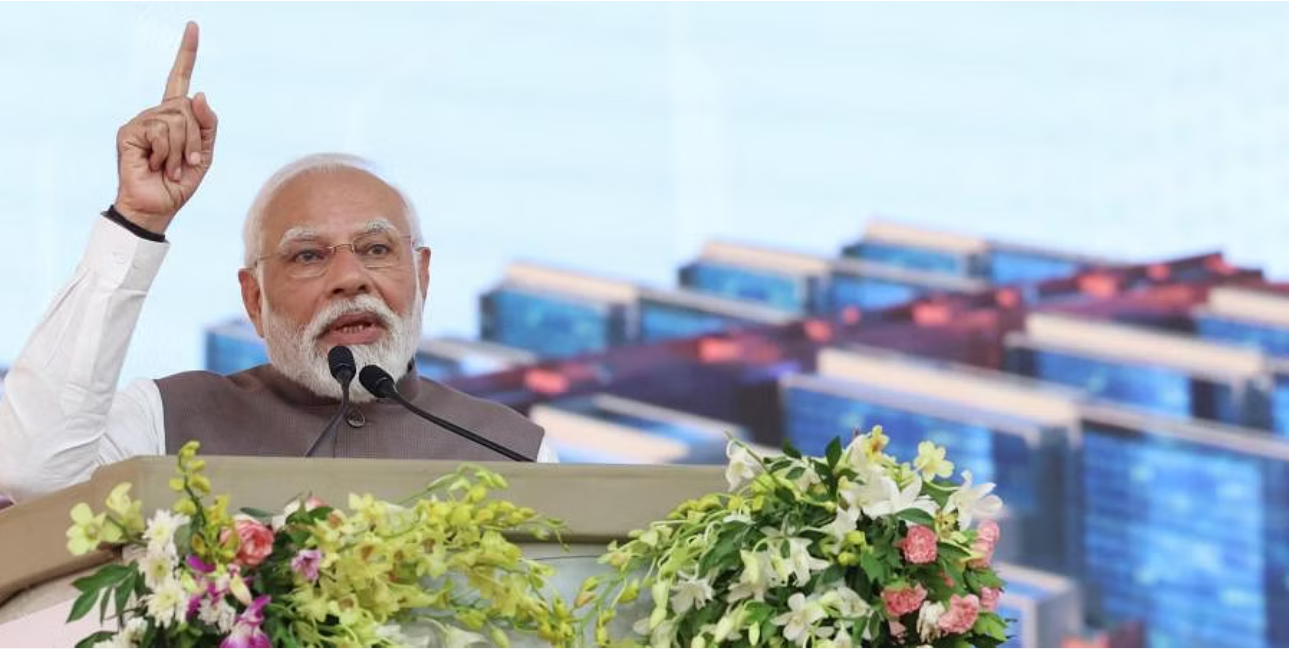Introduction:
Prime Minister Narendra Modi articulated a forward-looking vision for India’s economic future, emphasizing sustained growth and development. With an ambitious target of reaching the 5 trillion and subsequently the 10 trillion-dollar mark, the government’s plans extend over the next 25 years. This article provides an in-depth analysis of the Prime Minister’s statements, examining the proposed strategies and their potential impact on India’s economic landscape.
Setting the Stage for Growth:
Prime Minister Modi’s announcement underscores the government’s commitment to fostering long-term economic stability and prosperity. By unveiling plans that span a quarter-century, the administration aims to create a comprehensive framework that transcends short-term fluctuations, promoting sustained and inclusive economic growth.

The 5 Trillion-Dollar Milestone:
The Prime Minister’s focus on achieving a 5 trillion-dollar economy reflects a strategic roadmap that involves targeted policy initiatives, investment in key sectors, and structural reforms. The aspiration to reach this milestone signals a proactive approach to elevate India’s global economic standing and enhance the quality of life for its citizens.
Strategies for Economic Expansion:
The Prime Minister outlined a multifaceted approach to achieve these ambitious economic goals. This includes bolstering infrastructure, encouraging innovation and entrepreneurship, leveraging technology, and fostering a conducive business environment. Additionally, emphasis is placed on inclusive development to ensure that the benefits of economic growth reach all sections of society.
The 10 Trillion-Dollar Vision:
Looking beyond the 5 trillion-dollar benchmark, the Prime Minister’s vision extends to achieving a 10 trillion-dollar economy. This signals a recognition of India’s immense economic potential and a determination to capitalize on emerging opportunities. The government envisions sustained progress through continuous reforms and adaptive strategies that align with global economic trends.
Infrastructure Development:
A key component of the economic vision involves substantial investments in infrastructure development. The government plans to create a robust foundation for growth by enhancing connectivity, modernizing transportation networks, and upgrading digital infrastructure. These initiatives are expected to stimulate economic activity and attract both domestic and foreign investments.
Global Collaboration and Economic Diplomacy:
Prime Minister Modi emphasized the importance of global collaboration and economic diplomacy in realizing India’s economic aspirations. By positioning India as an attractive investment destination, the government aims to strengthen economic ties with other nations, fostering mutually beneficial relationships and contributing to global economic stability.
Strategic Reforms:
Integral to the Prime Minister’s economic vision is the implementation of strategic reforms aimed at streamlining bureaucratic processes, reducing regulatory hurdles, and enhancing the ease of doing business. By fostering a business-friendly environment, the government seeks to attract investments, both domestic and foreign, and catalyze economic activity across sectors.
Inclusive Development:
The government’s commitment to inclusive development is a cornerstone of its economic vision. Prime Minister Modi emphasized the importance of ensuring that the benefits of economic growth reach every stratum of society. Initiatives focusing on skill development, education, and healthcare are pivotal in creating a workforce that is not only skilled but also healthy and capable of contributing meaningfully to the nation’s progress.
Digital Transformation:
Acknowledging the transformative potential of technology, the Prime Minister highlighted the significance of digital transformation in driving economic growth. The government envisions leveraging advancements in technology to enhance governance, facilitate e-commerce, and bridge the digital divide. This focus on digitization aligns with global trends and positions India as a technology-driven economic force.
Environmental Sustainability:
A notable aspect of the economic vision outlined by Prime Minister Modi is the emphasis on sustainable development. The government recognizes the importance of balancing economic growth with environmental responsibility. Policies promoting clean energy, conservation, and eco-friendly practices are integral to ensuring that India’s economic progress is sustainable in the long run.
Challenges and Mitigation:
While the economic vision is ambitious and promising, it is essential to acknowledge and address potential challenges. These may include geopolitical uncertainties, global economic fluctuations, and the need for continued social and political stability. The government’s adaptive and proactive approach, coupled with effective risk mitigation strategies, will play a crucial role in navigating these challenges.
Collaborative Efforts:
Realizing the ambitious economic targets outlined by Prime Minister Modi necessitates a collaborative effort involving various stakeholders. This includes cooperation between the government and the private sector, academia, civil society, and global partners. By fostering a sense of shared responsibility, India can harness the collective expertise and resources needed to drive sustainable economic development.
Conclusion:
Prime Minister Narendra Modi’s articulation of the government’s economic plans for the next 25 years reflects a visionary approach to India’s economic trajectory. The ambitious targets of a 5 trillion and subsequently a 10 trillion-dollar economy underscore a commitment to sustained growth, innovation, and inclusive development. As the nation embarks on this transformative journey, the success of these plans will depend on effective implementation, adaptability to changing global dynamics, and the collective efforts of government, industry, and citizens alike.